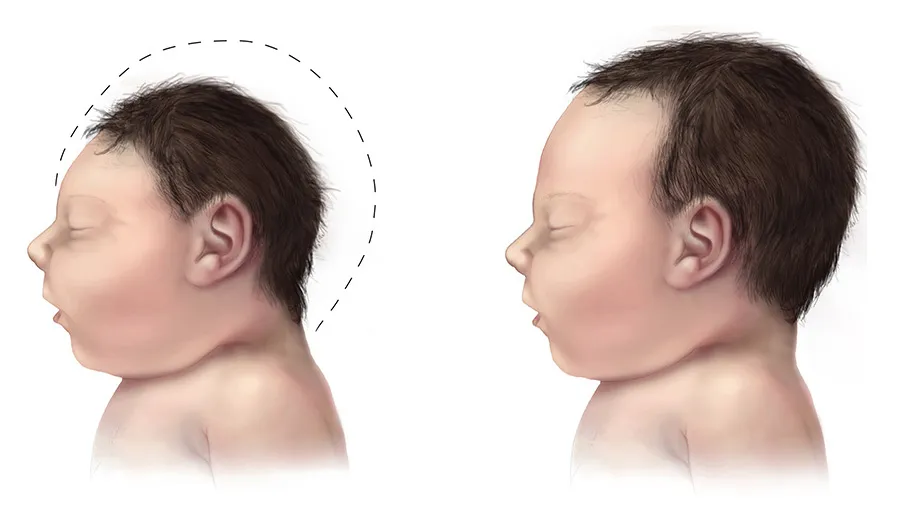Table of Contents

Malnutrition is a pervasive yet often overlooked problem that can have long-lasting repercussions on a child’s health and well-being. As a pediatrician and obesity medicine specialist, I am Dr. Michael Nwaneri, and I offer this guide to provide you with an exhaustive understanding of child malnutrition. This guide aims to be your go-to resource for understanding, identifying, and tackling malnutrition effectively, as it covers the topic comprehensively, accurately, and reliably.
Demystifying Malnutrition: What Exactly Is It?
Malnutrition is a condition resulting from an imbalance in essential nutrients required for optimal health and growth. It can manifest as either undernutrition, which includes stunting (reduced height for age), wasting (low weight for height), and micronutrient deficiencies, or overnutrition, characterized by overweight and obesity.
The Stunning Causes: What Leads to Malnutrition?
Undernutrition
- Poverty: Lack of access to quality food.
- Parental Ignorance: Lack of understanding about balanced diets.
- Disease: Chronic illnesses can lead to poor absorption of nutrients.
- Environmental Factors: Poor sanitation and lack of clean water.
Overnutrition
- High Caloric Foods: Easy access to fast food and sugary beverages.
- Sedentary Lifestyle: Lack of physical activity.
- Psychological Factors: Emotional eating due to stress or trauma.
Recognizing the Enemy: Signs and Symptoms
Undernutrition
- Stunted Growth: Failure to grow at the expected rate.
- Chronic Fatigue: Persistent feelings of tiredness.
- Impaired Immunity: Frequent illnesses.
Overnutrition
- Excessive Weight Gain: Beyond age and height norms.
- High Blood Pressure: Often unusual in children.
- Respiratory Issues: Like sleep apnea.

Diagnosing Malnutrition: Critical Steps
- Physical Examination: A thorough check-up to look for visible signs.
- Dietary History: Evaluating the child’s eating habits.
- Blood Tests: To check levels of essential nutrients.
- BMI Assessment: To determine weight status.
Epic Strategies for Treatment: Tailored Solutions
Undernutrition
- Dietary Modifications: Incorporating nutrient-dense foods.
- Supplementation: Vitamins and minerals as needed.
- Health Education: Teaching parents about balanced nutrition.
Overnutrition
- Dietary Counseling: Focused on portion control and food choices.
- Physical Activity: Structured exercise programs.
- Behavioral Therapy: For underlying emotional issues.
The Road to Victory: Preventive Measures
- Education: Empower parents with the knowledge of balanced diets.
- Regular Check-ups: To monitor growth and nutrient levels.
- Community Programs: Government and NGO initiatives can offer support.

Conclusion: Triumph Over Malnutrition
Malnutrition, whether undernutrition or overnutrition, is an adversary we can defeat. With comprehensive and early interventions, we can aim to give every child the opportunity for healthy growth and a fulfilling life.
References
- World Health Organization – Malnutrition
- American Academy of Pediatrics – Nutrition
- Centers for Disease Control and Prevention – Child Nutrition
Disclaimer: This guide is educational and should not replace professional medical advice.
FAQ
What is Malnutrition?
Malnutrition is a condition resulting from an imbalance in essential nutrients needed for optimal health and growth. It can manifest as undernutrition, including stunting, wasting, and micronutrient deficiencies, or overnutrition, characterized by overweight and obesity.
What Causes Malnutrition?
Undernutrition can result from poverty, parental ignorance about balanced diets, chronic illnesses, and environmental factors like poor sanitation. Overnutrition often stems from high-caloric foods, sedentary lifestyles, and psychological factors like emotional eating.
How Can Malnutrition be Recognized?
Signs of undernutrition include stunted growth, chronic fatigue, and impaired immunity. Overnutrition may present as excessive weight gain, high blood pressure, and respiratory issues like sleep apnea.
How is Malnutrition Diagnosed?
Diagnosis involves physical examination, dietary history evaluation, blood tests to check nutrient levels, and BMI assessment to determine weight status.
What Are the Treatment Strategies for Malnutrition?
For undernutrition, treatment may include dietary modifications, supplementation, and health education for parents. Overnutrition may require dietary counseling, physical activity programs, and behavioral therapy for underlying emotional issues.



